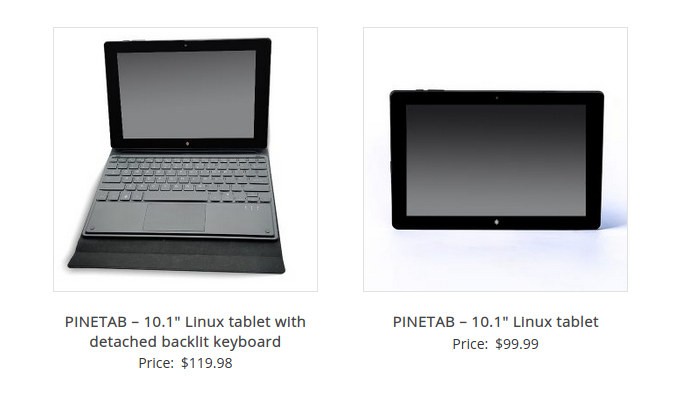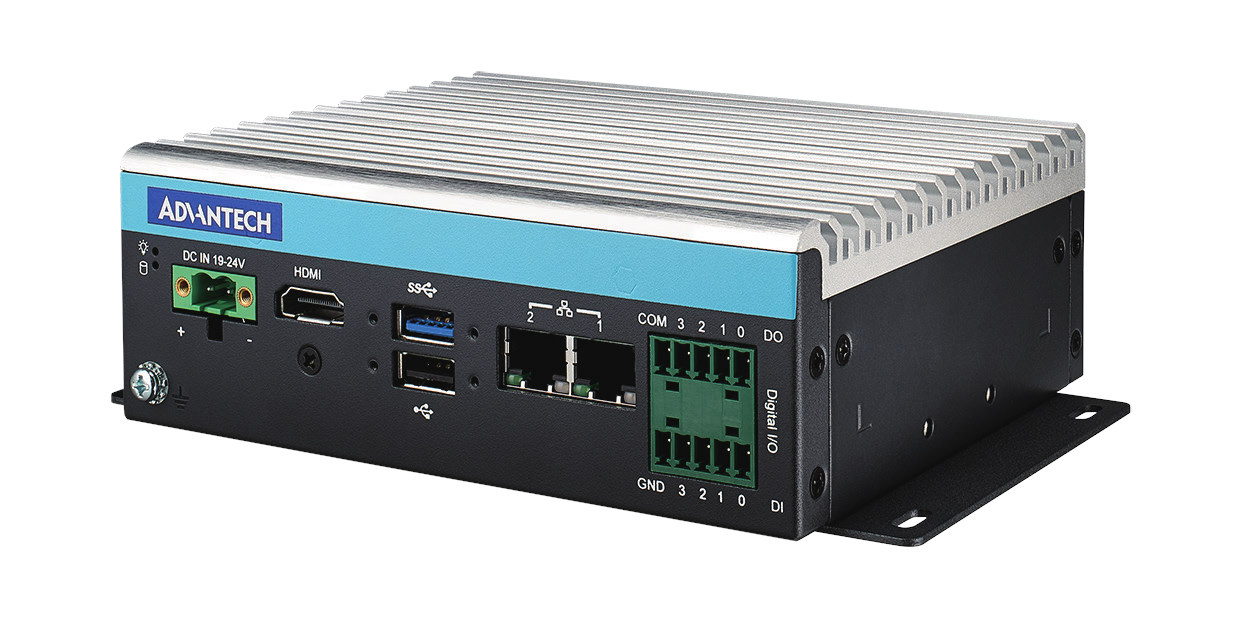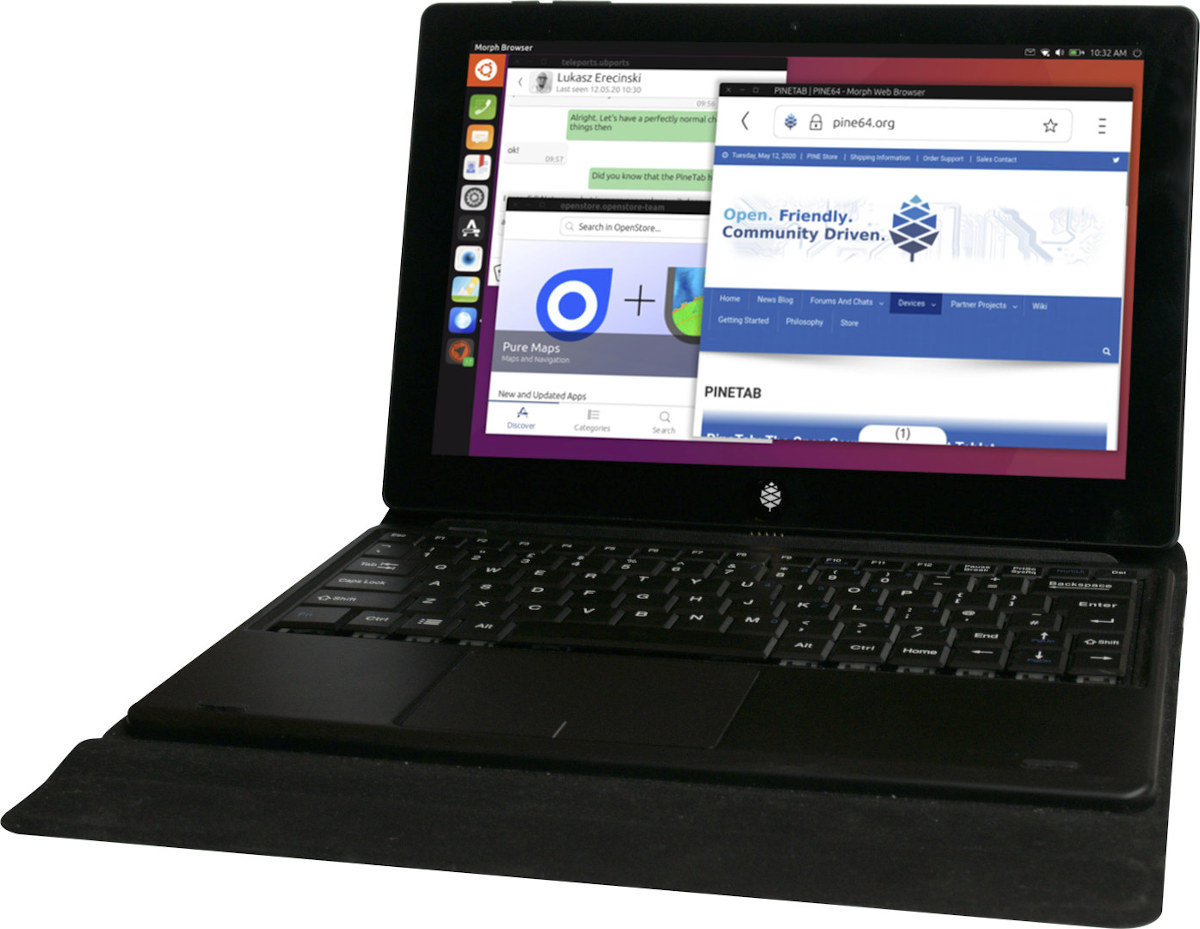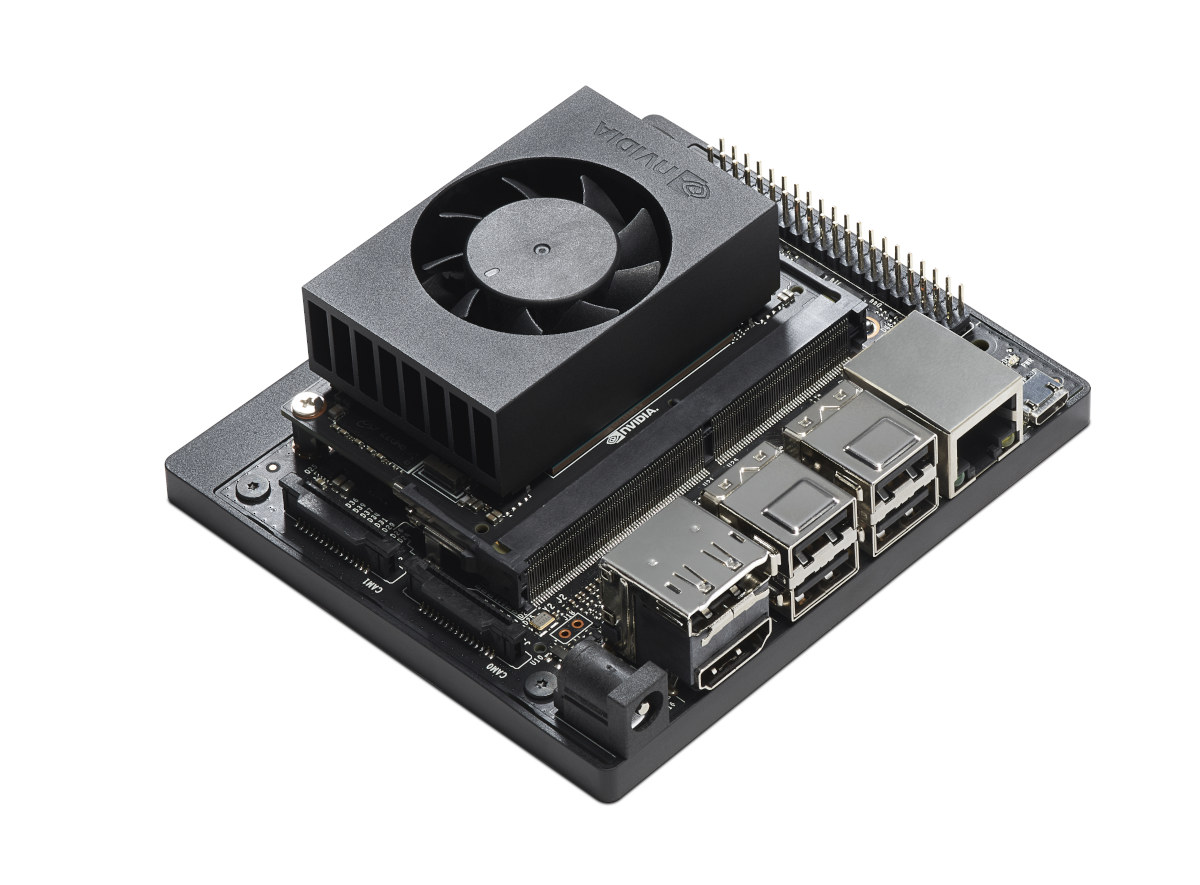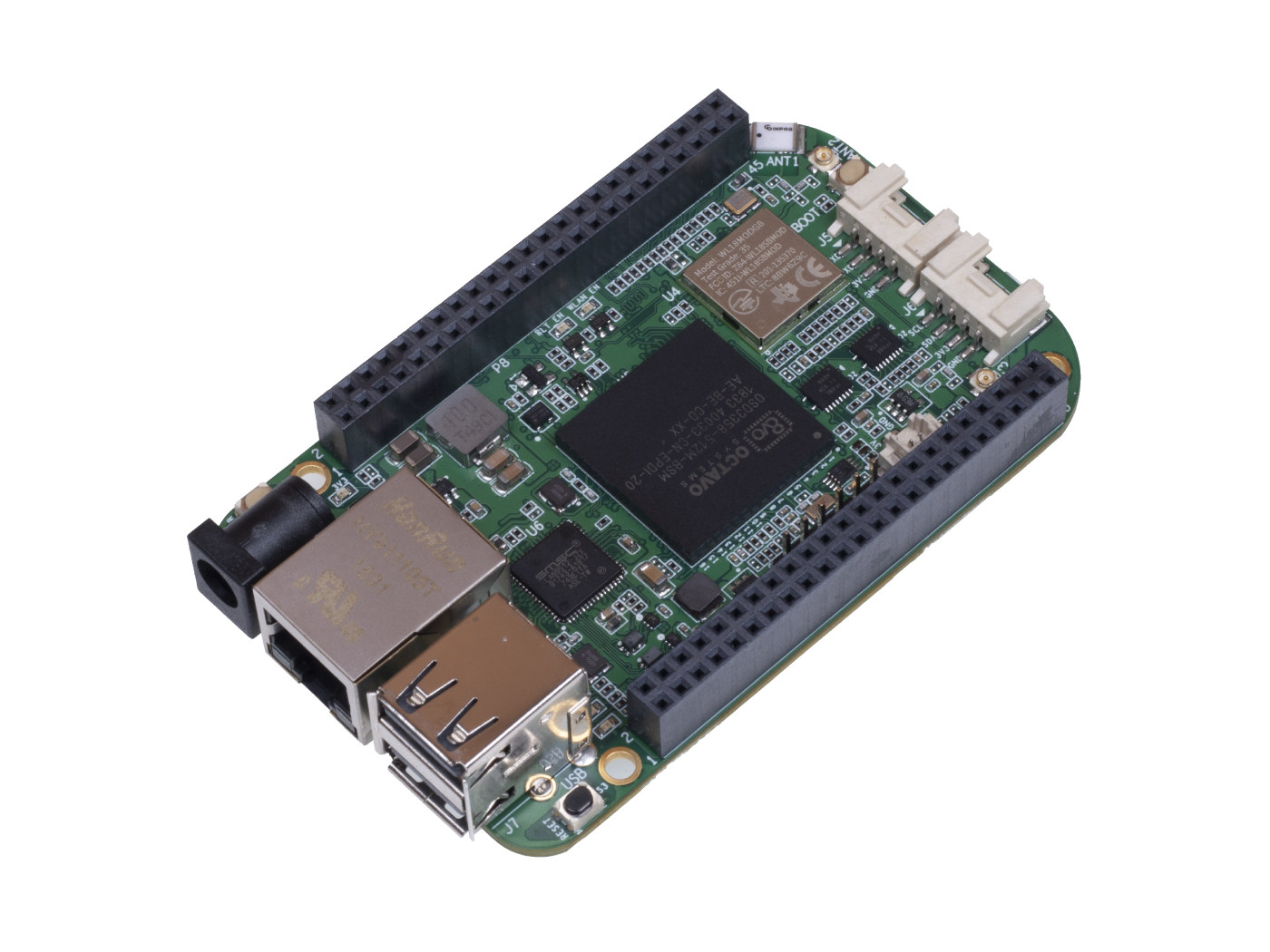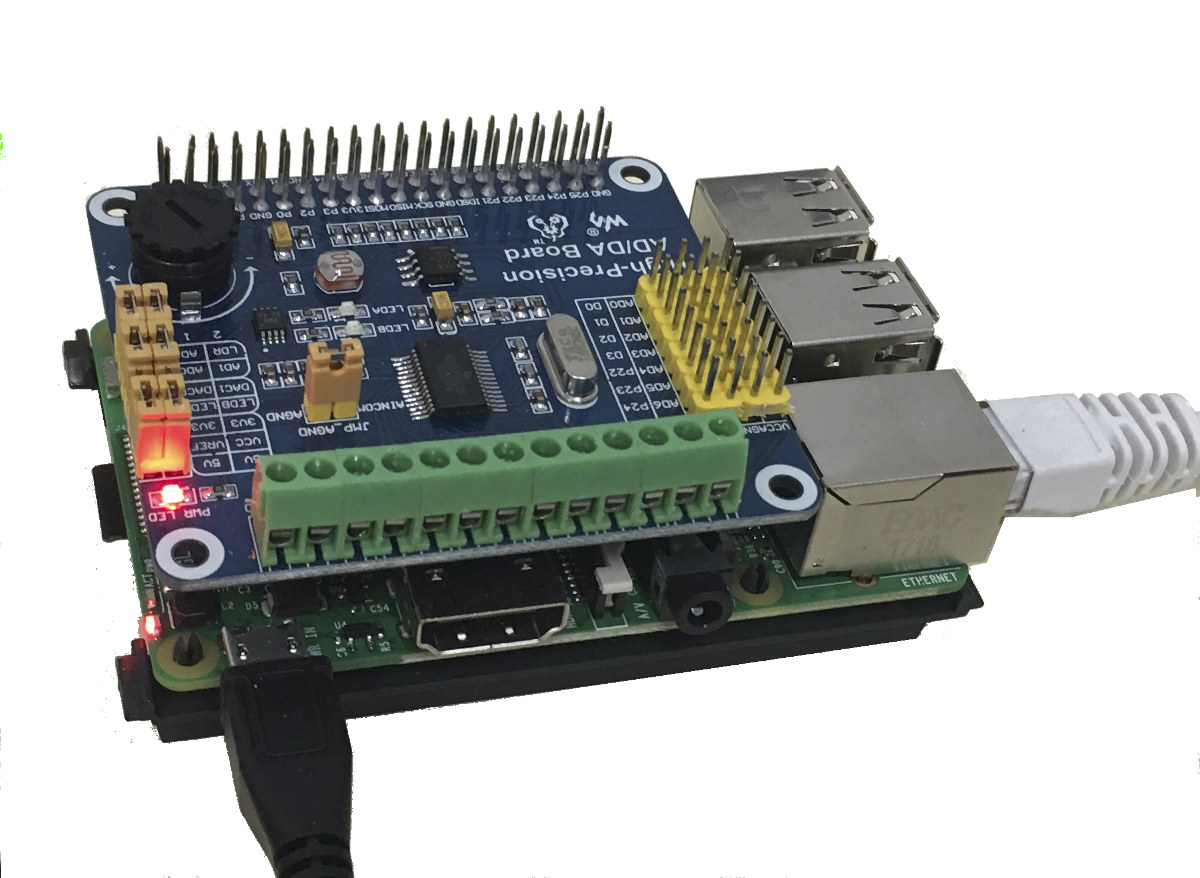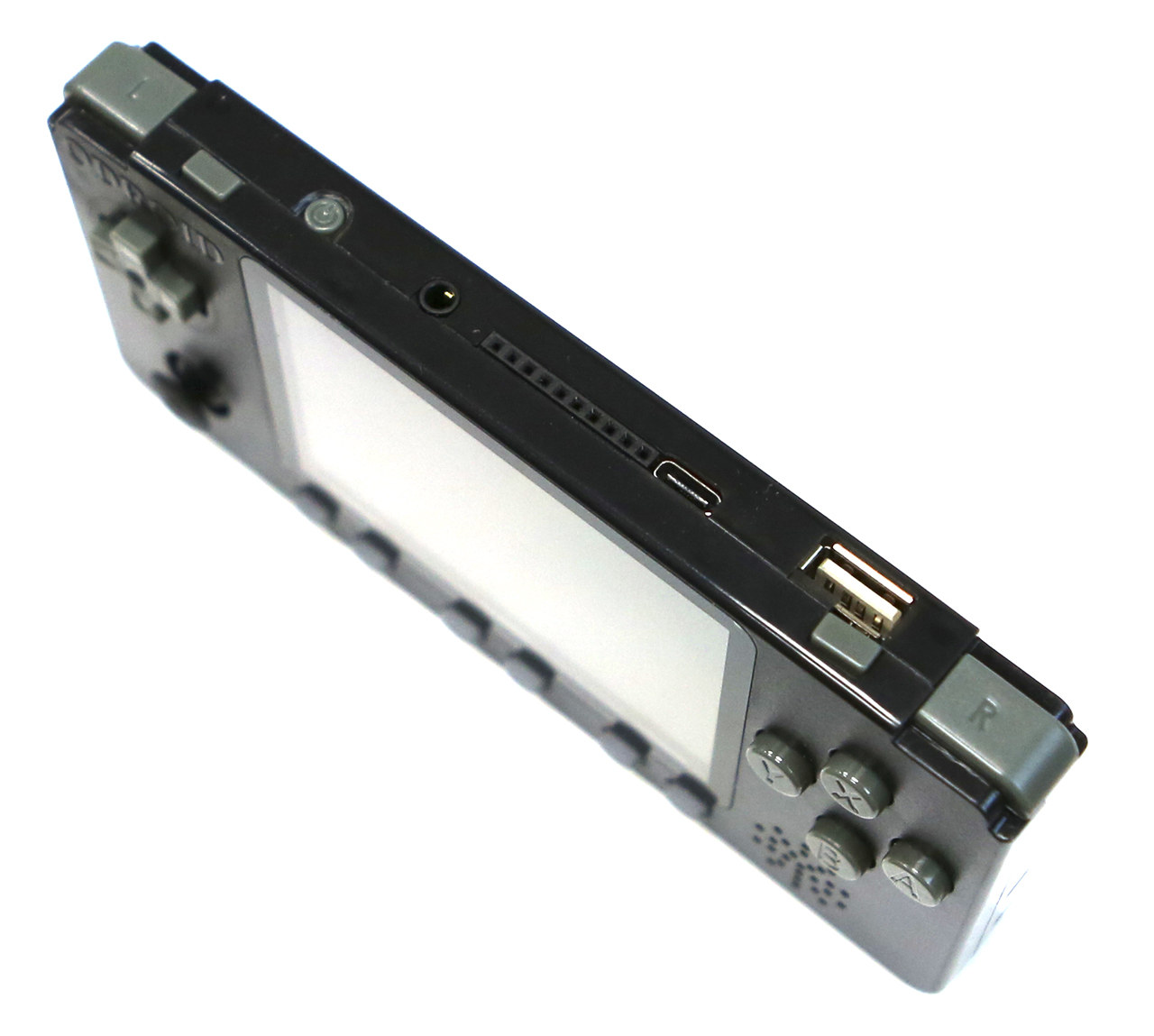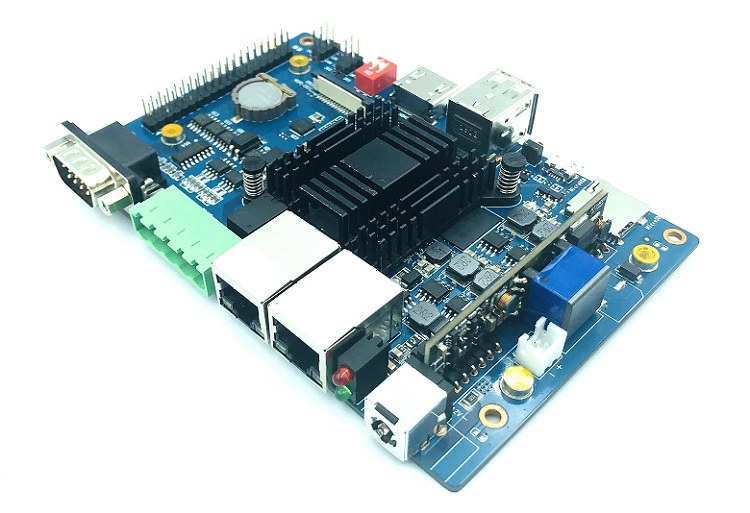As expected, Pine64 PineTab Linux tablet with Allwinner A64 processor, 2GB RAM, and a 10.1″ touchscreen display has just launched for $99.99 or $119.98 with a detachable backlit keyboard on Pine64 Store. Note those are pre-orders with shipping scheduled for the end of July. PineTab won’t shatter performance records with a quad-core Cortex-A53 processor with Mali-400MP GPU, 2GB RAM, 64GB eMMC flash, but it’s one of the rare Linux tablets on the market, and certainly the most affordable. The tablet offers a decent set of features too with a 10.1″ 720p capacitive display support for M.2 SATA SSD, Mini HDMI output, front-facing, and rear cameras, built-in WiFi and optional 4G LTE via the M.2 socket. It also comes with a 6,000 mAh battery that should be good for many hours. PineTab also leverages all the software work done since the launch of Pine A64 board in 2016 including mainline U-boot […]
Advantech Edge AI Computer and PoE NVR Feature NVIDIA Jetson Xavier NX SoM
Following the launch of NVIDIA Jetson Xavier NX SoM last year, we noted several third-party carrier boards and embedded PCs had been announced, and we expected more to come soon. Advantech has now unveiled two systems based on NVIDIA latest module with respectively MIC-710AIX edge AI computer and MIC-710IVX NVR system equipped with eight PoE ports. MIC-710AIX edge AI computer Specifications: SoM – NVIDIA Jetson Xavier NX with 6-core NVIDIA Carmel ARM v8.2 64-bit CPU, 6MB L2 + 4MB L3 caches 384-core NVIDIA Volta GPU with 48 Tensor Cores 2x NVDLA deep learning accelerators System Memory – 8GB 128-bit LPDDR4x Storage – 16 GB eMMC 5.1 flash Storage – M.2 2280 Key-M socket for SSD; SD card socket Video Output – HDMI up to 3840×2160 @ 60 Hz Networking – 2x Gigabit Ethernet (RJ45) via Intel i210IT controller USB – 1x USB 3.0 host port, 1x USB 2.0 host port, […]
PineTab Linux Tablet Coming Soon for $100. Watch an Ubuntu Touch Demo in the Meantime
People have been trying to launch Linux tablets for years from PenPod 700 to Jolla Tablet, or more recently NTablet. You may not know or remember about those, as Linux tablets that actually shipped never really gained traction. But in early 2019, Pine64 started to mention development work on PineTab, an Allwinner A64 powered BSD/Linux tablet, and the company/community is really good at developing low-cost hardware and providing decent firmware support, so hopes were high. After COVID-19 related delay, Pine64 has now announced the first PineTab tablets would go for pre-order at the end of the month for $99. PineTab specifications: SoC – Allwinner A64 quad-core Cortex-A53 processor with Arm Mali-400 MP2 GPU System Memory – 2GB LPDDR3 RAM Storage – 64GB eMMC flash, MicroSD card slot, M.2 slot for SATA SSD Display – 10″ MiPi 720p Capacitive LCD Video output – Mini HDMI up to 4K @ 30 Hz […]
NVIDIA Introduces Jetson Xavier NX Developer Kit, and Cloud-Native Support
NVIDIA Jetson Xavier NX SoM was launched last month for $459. But while some third-party carrier boards were also announced at the time, the company had yet to offer Jetson Xavier NX Developer Kit as they did for Jetson Nano. But as GTC 2020 conference is now taking place in the kitchen of Jensen Huang, NVIDIA CEO, the company had plenty to announce including Jetson Xavier NX Developer Kit as well as “Cloud-Native” support for all Jetson boards and modules. NVIDIA Jetson Xavier NX Developer Kit Specifications: CPU – 6-core NVIDIA Carmel ARMv8.2 64-bit processor with 6 MB L2 + 4 MB L3 cache GPU – NVIDIA Volta architecture with 384 NVIDIA CUDA cores and 48 Tensor cores Accelerators 2x NVDLA Engines 7-Way VLIW Vision Processor Memory – 8 GB 128-bit LPDDR4x 51.2GB/s Storage – MicroSD slot, M.2 Key M socket for NVMe SSD Video Output – HDMI and DisplayPort […]
BeagleBone Green Gateway SBC with Ethernet, WiFi, and Bluetooth Launched for $60
BeagleBone Green Gateway SBC was first unveiled last July as an update to BeagleBone Green Wireless board with Ethernet, and Octavo Systems OSD3358 SiP along with some smaller changes like support for 12V power supply and I2C RTC + battery. The board did however lose two USB 2.0 ports to make space for the Ethernet connector. The board was not quite available at the time, but the good news is that you can now buy BeagleBone Green Gateway for $59.99 on Seeed Studio. Specifications have remained the same as the ones provided for the initial announcement: SiP – Octavo Systems OSD3358 with Texas Instruments AM3358 Arm Cortex-A8 processor @ 1.0 GHz, 2×32-bit 200-MHz programmable real-time units (PRUs), 3D graphics accelerator, 512MB DDR3 SDRAM, 4KB EEPROM, and integrated power management Storage – 4GB 8-bit eMMC on-board flash storage (Kington) + microSD socket Connectivity 10/100Mbps Ethernet (RJ45) WiFi 802.11 b/g/n 2.4GHz + […]
HART-IP Developer Kit Leverages Raspberry Pi 3B+, Off-the-Shelf Add-on Boards for Industrial Field Communication
Have you ever heard about the bi-directional HART communication protocol? I haven’t, but I should probably have as there’s an installed base of over 40 million HART-enabled instruments according to FieldComm Group who owns the protocol and the organization is comprised of 375 corporate members working on process automation instrumentation, systems, and services. HART stands for Highway Addressable Remote Transducer. The organization is also maintaining the more recent (2009) HART-IP IP-enabled version of the HART field communication protocol and just launched HART-IP Developer Kit whose hardware is comprised of a Raspberry Pi 3B+ SBC and off-the-shelf add-on boards mounted on a DIN Rail mount. List of all hardware components: Raspberry Pi 3B+ SBC DSLRKIT Power Over Ethernet PoE HAT (around $20 on Aliexpress) Waveshare Raspberry Pi High-Precision AD/DA (about $30) DINrPlate DIN Rail Mount. MicroSD card On the software side, the system runs Ubuntu MATE 18.04 64-bit preloaded on the MicroSD […]
ODROID-Go Advance Black Edition Gets WiFi, R2/L2 Button, and USB-C Power Input
At the end of last year, Hardkernel launched ODROID-GO Advance portable Linux retro game console powered by a Rockchip RK3326 processor with 1GB RAM, and a 3.5″ color display. While it was fairly well-received, people wished it would not come with a large power barrel jack and included WiFi among a few other requests. COVID-19 also delayed mass-production of the device, but the silver lining is that the company decided to make a new revision 1.1 PCB with a USB-C port for power input, a WiFi module, and R2 and L2 buttons that’s planned to launch soon under the name ODROID-Go Advance Black Edition. ODROID-Go Advance Black Edition specifications: SoC – Rockchip RK3326 quad-core Arm Cortex-A35 processor @ 1.3GHz with Mali-G31 MP2 GPU System Memory – 1GB DDR3L @ 786Mhz, 32 Bits bus width Storage – 16MB SPI Flash for bootloader, Micro SD Card slot (UHS-1 Capable interface) Display – […]
Banana Pi BPI-F2P Industrial Control Board Adds PoE, RS-232 and RS-485 Interfaces
At the end of Last year, we covered Banana Pi BPI-F2S Industrial SBC powered by Sunplus SP7021 “Plus1” SoC with four Cortex-A7 core, an Arm A926 microprocessor, an 8051 core, as well as 128MB to 512MB built-in DDR3 RAM. The company has now unveiled Banana Pi BPI-F2P with the same processor and many of the same features, but with the addition of PoE support on one of the Fast Ethernet ports, as well as an RS-232 DB9 connector, and RS-485 terminal blocks. The expansion connector for an FPGA board found in BPI-F2S is however gone. Banana Pi BPI-F2P specifications: SoC – Sunplus SP7021 “Plus1” with a quad-core Cortex-A7 processor @ 1.0 GHz, one Arm A926 microprocessor, an 8051 core to handle I/Os, and 128MB or 512MB DDR3 DRAM. Storage – 8GB eMMC flash, microSD card slot Video Output – HDMI 1.4 output Camera I/F – MIPI CSI connector Connectivity – […]


